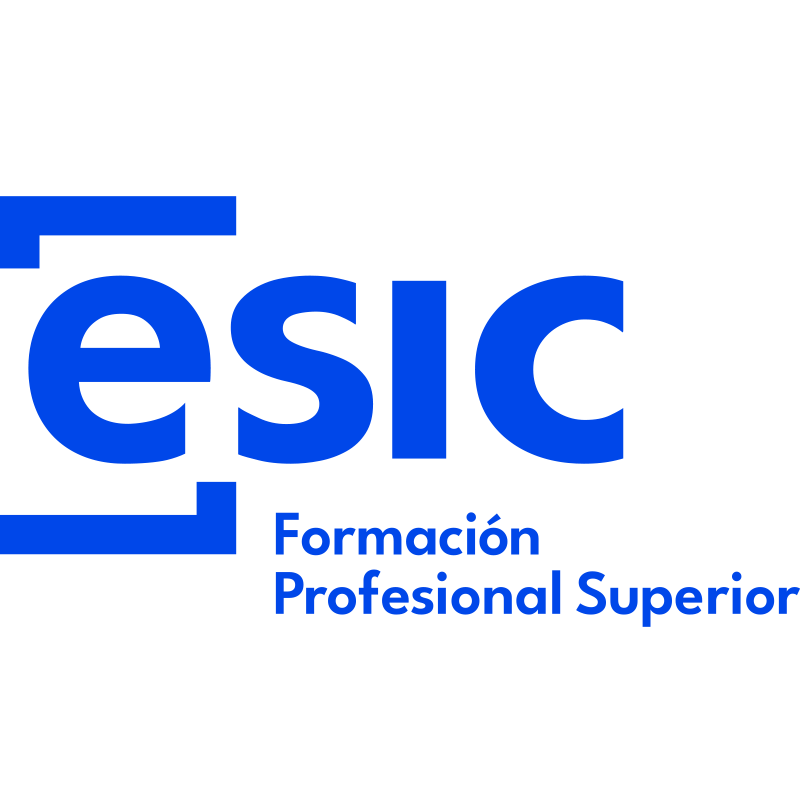
Cómo acceder a la universidad desde un Grado Superior de Formación Profesional
Mundo educativo | Artículo-
Visitas1506
- Septiembre 2024
- Fecha de publicación
- Septiembre 2024
- Mundo educativo
- Artículo
El acceso a la educación superior es una meta compartida por muchos estudiantes que buscan ampliar sus horizontes académicos y profesionales. Aunque la vía tradicional a la universidad es la educación secundaria y el bachillerato, existe un camino alternativo igualmente válido: la transición desde un ciclo formativo de formación profesional, un enfoque que ofrece a los estudiantes una ruta específica para continuar su formación académica y explorar nuevas oportunidades.
Requisitos para acceder a la Universidad desde un grado superior
¿Te gustaría cursar nuestros ciclos formativos superiores? Accede para más información.
Para acceder a la universidad desde un grado superior de formación profesional (FP), es indispensable comprender los requisitos y procedimientos específicos establecidos por cada país y sistema educativo. En términos generales, estos requisitos son los siguientes:
Título de FP de Grado Superior
Los estudiantes deben haber completado con éxito un ciclo formativo de grado superior relacionado con el área de estudio que desean seguir en la universidad.
Pruebas de acceso específicas
En algunos países, pueden requerir pruebas de acceso específicas para evaluar la preparación del estudiante en materias relacionadas con los estudios universitarios deseados. Estas pruebas pueden variar y abarcar áreas como matemáticas, ciencias o idiomas dependiendo del programa universitario.
Entrevistas o evaluaciones adicionales
Algunas universidades pueden exigir entrevistas o evaluaciones adicionales para evaluar las habilidades y motivaciones del estudiante en relación con los estudios elegidos.
Cumplir con los requisitos de idioma
En casos donde el idioma de instrucción en la universidad sea diferente al del grado de FP, pueden ser necesarias pruebas de competencia en el idioma correspondiente, como es el caso del TOEFL o el IELTS en inglés.
Prioridad de acceso a determinadas ramas
Si completamos nuestros estudios en FP, podemos continuar nuestra formación en estudios superiores, aunque no en cualquiera, sino en aquellos relacionados con los estudios que ya hemos terminado. Aquí te dejamos algunos ejemplos de cómo puedes continuar con tu formación:
1. Grado superior en administración y finanzas
Con este curso, puedes seguir tu formación en distintas ramas:
-
Grado en dirección y administración de empresas (ADE)
-
Grado en economía
-
Grado en contabilidad y finanzas
-
Grado en marketing
-
Grado en relaciones laborales y recursos humanos
-
Grado en comercio internacional
2. Grado superior en marketing y publicidad
Con este curso, puedes seguir tu formación en distintas ramas:
-
Grado en dirección y administración de empresas (ADE)
-
Grado en digital business
-
Grado en periodismo
-
Grado en marketing
-
Grado en RRPP y publicidad
-
Grado en psicología
-
Grado en gestión de eventos y protocolo
3. Grado superior en comercio internacional
Con este curso, puedes seguir tu formación en distintas ramas:
-
Grado en economía
-
Grado en comercio internacional
-
Grado en dirección y administración de empresas (ADE)
-
Grado en marketing
-
Grado en negocios internacionales
-
Grado en derecho
-
Grado en turismo
4. Grado superior en desarrollo de aplicaciones multiplataforma
Con este curso, puedes seguir tu formación en distintas ramas:
-
Grado en ingeniería informática
-
Grado en matemáticas
-
Grado en ingeniería de sistemas de información
-
Grado en diseño y desarrollo de videojuegos
-
Grado en ciberseguridad
-
Grado en inteligencia artificial
-
Grado en telecomunicaciones
-
Grado en diseño gráfico y programación web
-
Grado en gestión y desarrollo de negocios digitales
5. Grado superior en desarrollo de aplicaciones web
Con este curso, puedes seguir tu formación en distintas ramas:
-
Grado en ingeniería informática
-
Grado en matemáticas
-
Grado en ingeniería de sistemas de información
-
Grado en diseño y desarrollo de videojuegos
-
Grado en marketing digital
-
Grado en inteligencia artificial
-
Grado en multimedia y comunicación digital
-
Grado en diseño gráfico y programación web
-
Grado en gestión y desarrollo de negocios digitales
Convalidar créditos
La convalidación de los créditos depende de la universidad a la que quieras acudir. No es necesario realizar la prueba de acceso a la universidad que deben hacer los estudiantes de Bachillerato, pero sí es una opción si quieres mejorar la nota y por tanto, las posibilidades de ser admitido.
Tendrás que presentar el plan de estudios de la FP, las asignaturas cursadas, las competencias desarrolladas y las horas de formación. La universidad se encargará de evaluar esta información y de convalidarla con los créditos que considere relevantes según la formación realizada durante la FP. Es decir, habrá algún crédito que no tengas que cursar por haberlo hecho ya en esta formación.
Ventajas de acceder a la universidad a través de una FP superior
Son muchas las ventajas que te ofrece haber estudiado antes de la carrera un grado superior de FP, pero sin duda destaca la especialización práctica, ya que los estudiantes que lo completan obtienen conocimientos prácticos y especializados en su área de estudio que les proporcionan una base sólida para los estudios universitarios. Además, como hemos comentado a lo largo de este artículo, otra de las grandes ventajas derivadas de esta acción es la experiencia laboral que se adquiere, pues muchos programas de FP incluyen períodos de prácticas en empresas, lo que permite a los estudiantes adquirir experiencia laboral directa y establecer conexiones valiosas en el mundo profesional.
Muchos alumnos optan por este camino porque a los 18 años aún no tienen claro qué carrera universitaria elegir y el hecho de estudiar un ciclo superior antes de entrar en el grado universitario ofrece una flexibilidad muy ventajosa a la hora de elegir la carrera, ya que pueden cambiar de dirección si descubren nuevas áreas de interés durante su formación técnica. Por último, hay que destacar que, para los alumnos de los grados superiores de FP, los estudios universitarios probablemente tengan una menor duración, pues gran parte de las universidades reconocen y valoran la formación técnica previa, lo que puede reducir el tiempo necesario para completar un programa universitario.
Sin embargo, pese a todas las ventajas que tiene acceder a la universidad desde un grado superior de FP, también puede presentar desafíos. Por ejemplo, algunos estudiantes llevan tiempo sin estudiar profundamente aspectos teóricos y, por ello, se pueden enfrentar a la necesidad de ponerse al día con la teoría o la dinámica de los estudios. Sin duda, la adaptación a un entorno académico diferente y la gestión de las expectativas son factores clave para superar estos desafíos.
Si tienes interés en estudiar una formación profesional de calidad antes de ir a la universidad, no te puedes perder la amplia oferta de ESIC, con diferentes ciclos formativos superiores que te ayudarán a conseguir la experiencia práctica necesaria para acceder más adelante a la carrera con una experiencia única y de gran valor en ese ámbito.
También te puede interesar

¿Qué es el Air Waybill (AWB) y para qué sirve?
El Air Waybill, o carta de porte aéreo, es un documento estandarizado que acredita formalmente el contrato de transporte aéreo de mercancías. En esencia, funciona como un acuerdo jurídico entre el...
- Publicado por ESIC Formación Profesional Superior

Qué es el efecto priming? Ejemplos de aplicación en marketing”
El efecto priming influye significativamente en las decisiones que tomamos sin que seamos conscientes de ello. ¿Alguna vez has comprado algo sin saber exactamente por qué lo elegiste? No estás solo...
- Publicado por _ESIC Business & Marketing School

BATNA: qué es, por qué es importante y ejemplos
En todo proceso de negociación, contar con una estrategia sólida es tan importante como conocer los intereses propios y ajenos. Uno de los conceptos más relevantes en este contexto es el BATNA (Bes...
- Publicado por _ESIC Business & Marketing School

